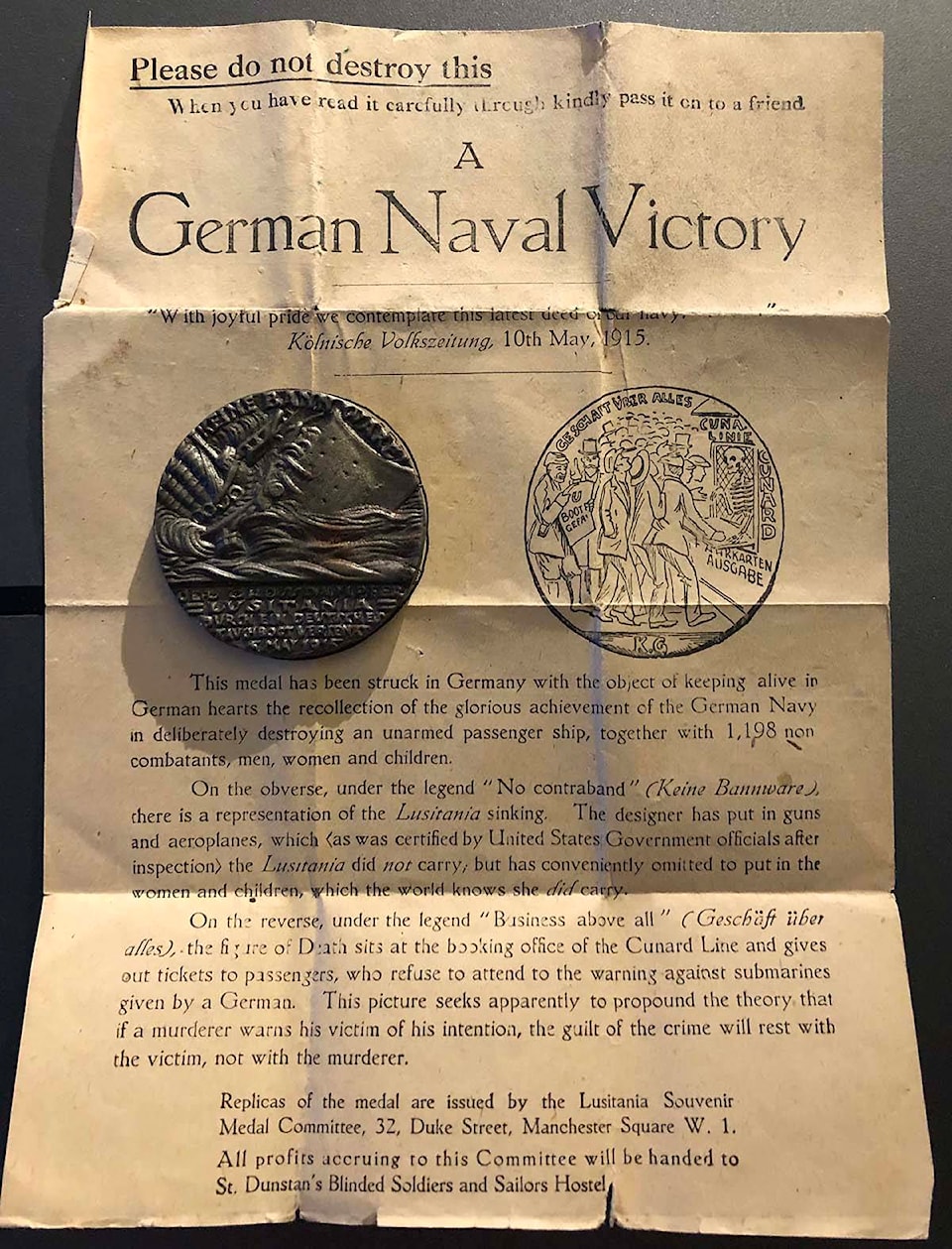On occasion, we receive, at Pitt Meadows Museum, an object we retain, not so much for its value in documenting area history, but more for its unique and curious value.
One such object came in this past summer and will eventually be on exhibit with other artifacts related to military history.
The object – a medallion (that was referred to at the time as a medal) originally struck just after the sinking of the Lusitania on May 7, 1915.
RELATED: The real story behind Maple Ridge and Mission’s famous train robber.
The medal, cast in bronze, is a propaganda item produced by the Lusitania Souvenir Medal Company for British Naval Intelligence in the weeks following the sinking and in direct response to an almost identical medal – also a propaganda tool – privately struck in Germany after the attack.
Karl Goetz, the artist who engraved the German medal, was well known for his satirical work that was done to provoke and ridicule, and his Lusitania medal was no exception.
Directed at the British, it included the inscription “no contraband goods,” implying there were war supplies or arms on the ship that justified the torpedoing of a passenger liner, and the reverse side showed passengers buying tickets from “death” even though there was a clear threat from U-boats in the North Atlantic at that time, thus implying they should have known what was coming.
It is clear Goetz believed the Germans were faultless as they had warned the passengers, including the Americans onboard through newspaper advertisements about U-boats, and the Allied forces and Cunard line negligent in their duty by not heeding the warnings.
In the first minting, the German medal appeared with a date of May 5, two days before the actual torpedoing, and it was this inaccuracy, likely Goetz’s mistake, the British took aim at when they replicated the medal and sold it along with a circular that rebuked the blatant German militarism that targeted civilians and then produced a medal with a date that clearly indicated what Naval Intelligence wanted the British public to believe was a pre-planned attack.
The British replica medal came in a box with the circular that included minting information – “the Lusitania Souvenir Medal Committee … All profits accruing to this committee will be handed to St. Dunstan’s Blinded Soldiers and Sailors Hostel.”
And, in order that the public not be fooled by the keen likeness to its German counterpart, a header as follows: “Please do not destroy this. When you have read it carefully through kindly pass it on to a friend”.
The circular goes on to remind the reader of the callousness of the attack and finishes with the following comment on Goetz’s engraving of the sinking ship: “This picture seeks apparently to propound the theory that if a murderer warns his victim of his intention, the guilt of the crime will rest with the victim, not the murderer.”
As many as 300,000 British copies were produced and distributed as “medals,” implying blame for the German medal/medallion rested with their government rather than a private venture.
This tactic appears to have worked, as by January 1917, the Bavarian War Office had forbidden any further minting of the original medal and instructed existing medals be confiscated whenever possible.
Their British counterparts did not suffer the same fate, thus we now have this curiosity in our collection.
Leslie Norman is curator of Pitt
Meadows Museum.
